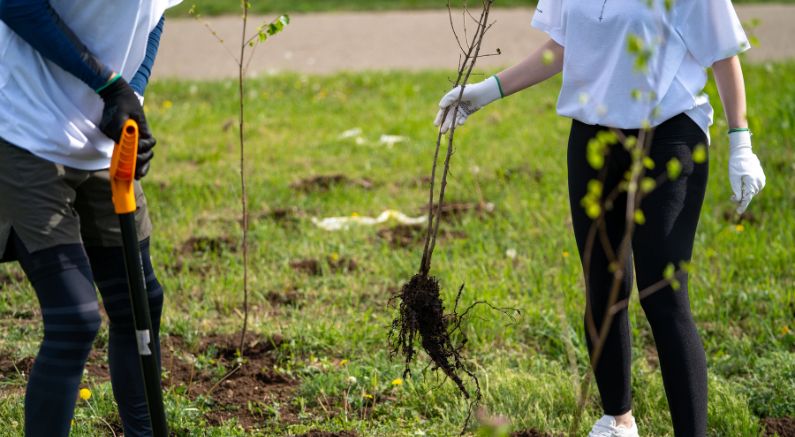Have you ever been shocked to find that the tree or shrub you ordered showed up to your door completely naked? Don't be! This is what we call a bare root plant, and they come with a number of advantages over their potted and balled-and-burlapped (B&B) counterparts.

The most obvious advantage? Bare root plants cost less! They are cost saving to the merchants, who pass these savings on to you. Because their packaging is lightweight and stackable, shipping them is a breeze. Potted and B&B plants must be handled carefully, because their heavy, soil-laden roots can make messes or even cause damage. Bare root plants don't have this problem. Furthermore, the lighter packaging means less fuel is needed to transport bare root plants. That's not only cost-saving, but eco-friendly, too!
Speaking of eco-friendliness, bare root plants have other environmental advantages. Their root bundles tend to be larger and more robust than those shipped in soil. This helps them get established quicker and grow faster.
When planting your new tree or shrub, bare roots make it easy. Potted or B&B plants are heavier than bare root plants. With bare roots, you don't have to worry about handling a heavy container of soil. You simply spread the roots and plant them in the earth. Nearly any tree or shrub can be produced as a bare root specimen, including bare root fruit trees.
It's Dormant, Not Dead

The leafless, naked look results from uprooting the plant during its natural dormant season. This is why they are most widely available from autumn to mid-spring. Uprooting the plants while they are dormant takes advantage of the natural hardiness they employ to combat winter weather.
When your bare root plant arrives, you should try to plant it as soon as possible. Make sure to keep the roots shaded and moist until they are in the ground; it's important that they don't dry out. Prior to planting, soak the roots for 1-24 hours (in the shade!) to ensure that they are supple and give the plant a head start.
After soaking, spread the roots out and prune off any damage. Next, dig a hole with rough edges. It should be big enough to accommodate the expanded root bundle without overcrowding it. If it's a bare root shrub, backfill it, water copiously, fortify with mulch, and you're done. If it's a bare root tree, follow the steps for alignment like you would with any other tree. Keep it vertical while backfilling, water copiously, and then you may want to steady it until it gets established. Two or three stakes around the tree securing it with soft rope should do the trick.
Planting bare root plants is not so different from planting potted or B&B plants, but the results can be remarkably advantageous. They settle in fast and grow quickly. And the cost cutting and environmental impact are worth it on their own. Plant bare root material with confidence. Give them time to wake up from the dormancy, and water them well the first season to get them established in your landscape. Enjoy!

